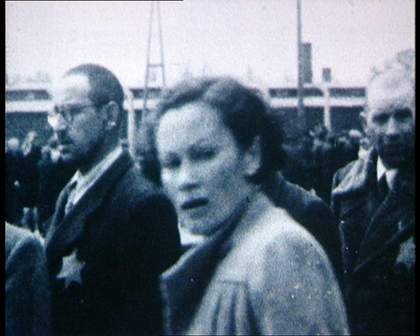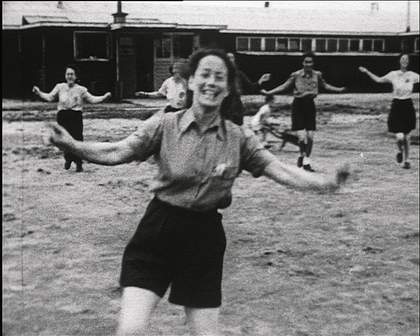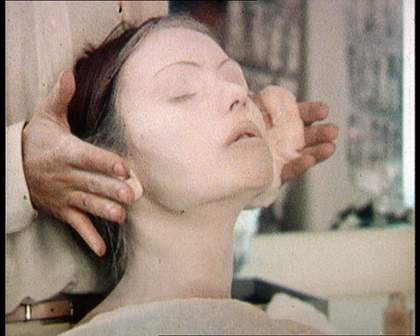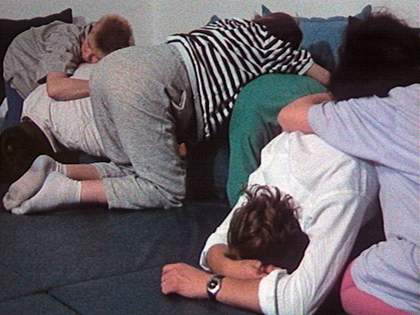In May 2006, at the International Festival of Jeonju in South Korea, I was on a jury led by the film-maker Harun Farocki. Apart from the films that we were obliged to see, we also noticed another – a short by Orzu Sharipov called 11000 km from New York – that we were so struck by we asked the festival’s permission to grant it a special mention. The directors agreed as long as we drew up a reason for our judgment. The reason we gave I think perfectly sums up the characteristics of Farocki’s work:
The jury wishes to give a very special mention to a film in which we unanimously find the qualities for which cinema is precious and necessary to us: a clever and direct confrontation with historical reality, a strong and subtle structuring, a personal and critical use of the recording apparatus, opposed to the mainstream flow of media clichés.

Harun Farocki
Videograms of a Revolution 1992
Film still
16 mm colour film
© Harun Farocki/AndreiUjica
Harun Farocki is a Czech filmmaker of Turkish origin. Born in 1944, he studied cinema at the Deutsche Film und Fernsehakademie in Berlin during the 1960s. Among his fellow students was Holger Meins, a future member of the Red Army Faction, in whose company Harun led a protest against the Vietnam War during the Belgian festival of Knokke-le-Zout in 1967. Like the films of Holger Meins (such as Making a Molotov Cocktail), Farocki’s first films, shot in black-and-white 16 mm, are jewels of agit-prop cinema: The Words of the Chairman (1967 – the words are paper weapons), Their Newspapers (1968 – against Axel Springer’s bourgeois press), White Christmas (1968 – Bing Crosby sings Peace on Earth while Harun reminds us that bombs are raining down on Vietnam). The most famous remains Inextinguishable Fire (1969), which unites activism and performance in that, to evoke the power of napalm on the human body, Farocki stubs out a cigarette on his arm. “One of the first punk films,” he would later comment with a smile. In this way he grappled head-on with history.

Harun Farocki
Respite 2007
Still image
Black-and-white digital video
© Harun Farocki
From an early stage, Farocki placed confrontation at the centre of his approach, not the confrontation between a small, single body and the great movement of collective history, but between dominant representations and the critical analysis of images, in works such as Industry and Photography (1979), As You See (1982), An Image (1983), Images of the World and the Inscription of War (1988), Still Life (1997), War at a Distance (2003) and Respite (2007). On 16mm and then on video, the war of images waged by Farocki is part of the development of a crucial cinematographic form – the visual study. This organises a frontal encounter, a face-to-face between an image already made and a figurative project devoted to observing it; in other words, a study of an image using the means of the image itself.
Harun Farocki’s undertaking, true to his Marxist principles, seeks to erase the separation between manual and intellectual labour. In Interface (1995), close observation of the actions of the editor at his editing table maps the common, concrete territory between speculative and manual movement – territory that the film The Expression of Hands (1997) will extend still further.

Harun Farocki
Images of the World and the Inscription of War 1988
Film still
Black-and-white film
© Harun Farocki
The synthesis of these different dimensions is doubtless to be found in Farocki’s series of films that observe the way in which bodies are attacked, trained, tamed and drained by the full set of control techniques: Indoctrination (1987) features a seminary in which trainees are inculcated with the practices of persuasion; the masterpiece How to Live in the FRG (1990) describes training for behaviour in different professions (police, midwives, an insurance company); Appearance (1996) is devoted to the world of advertising and logos; Learning to Sell Oneself (1997) and The Creators of the Shopping Worlds (2001) are the anthropological films that the Western world, the merchant of administrative, mutilated life, deserves.

Harun Farocki
How to Live in the FRG 1990
Film still
16mm colour film
© Harun Farocki
I once asked the young Argentinian filmmaker Mauro Andrizzi (author of Iraqi Short Films, 2008): “What’s the most subversive film in the history of cinema?” He replied: “Videograms of a Revolution by Harun Farocki and Andrei Ujica (1992).” The reason? “How to make a revolution with television. Good example of possible uses of the web. Best moment in the film: Ceausescu’s face captured by the official TV station when people storm Bucharest’s Central Committee. No countershot of the crowd, just his frozen face, staring nowhere. Then, the camera points to the sky, and there’s only sky and shouts. Pure cinema. The revolution, live.”
